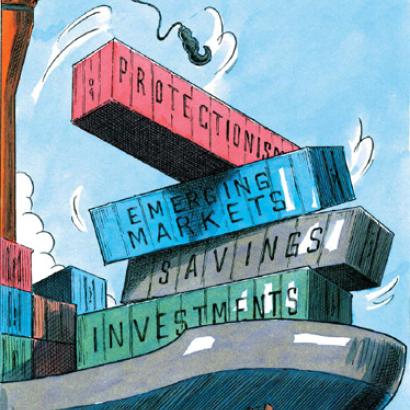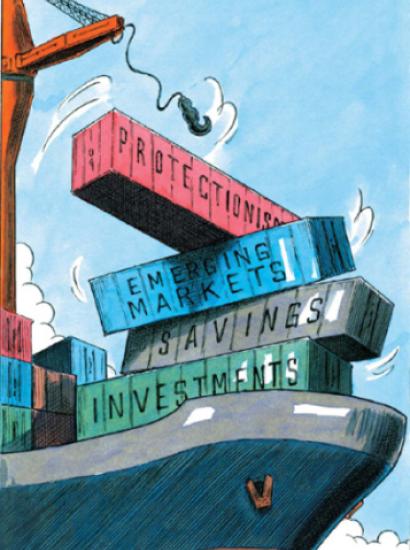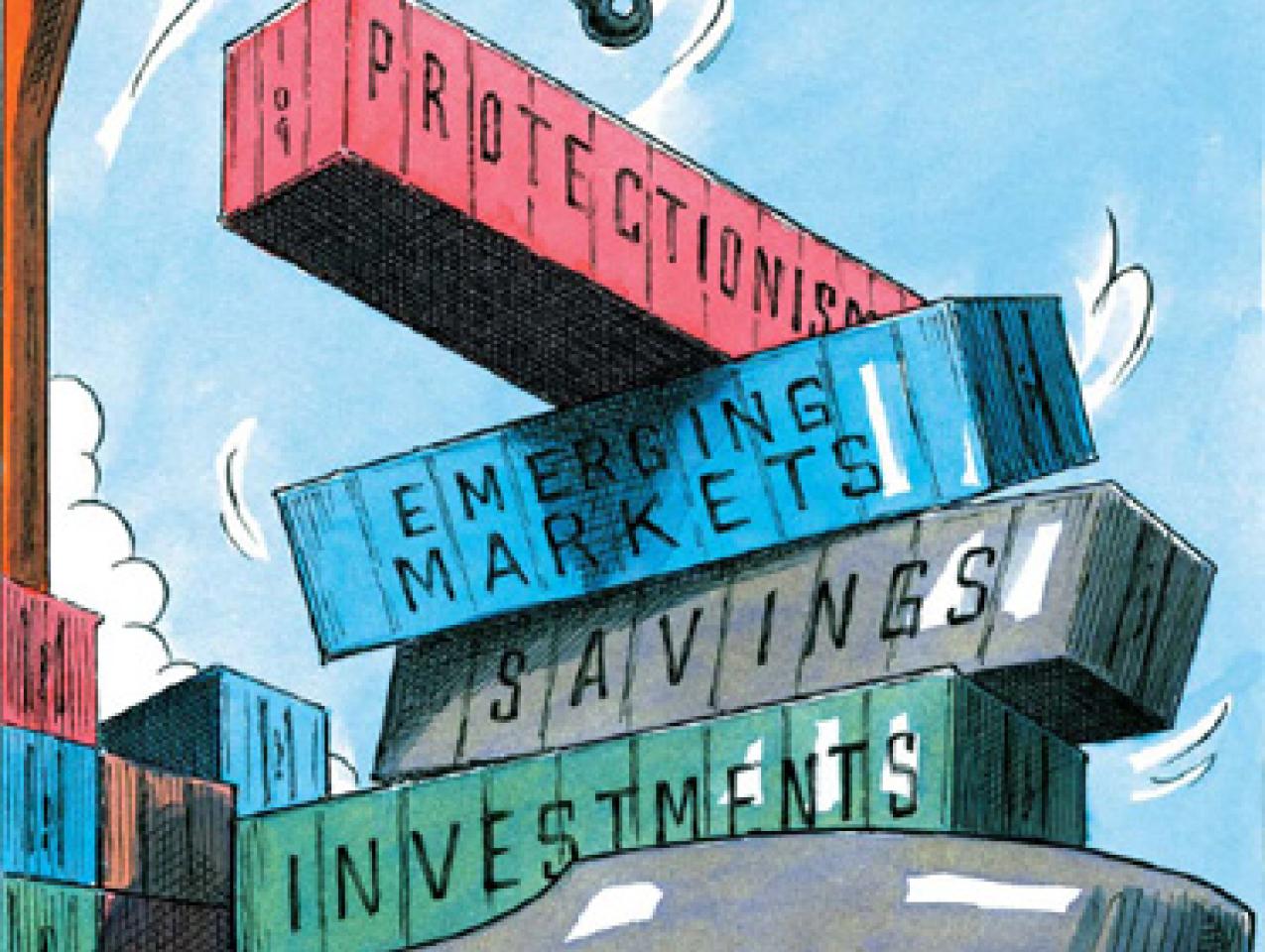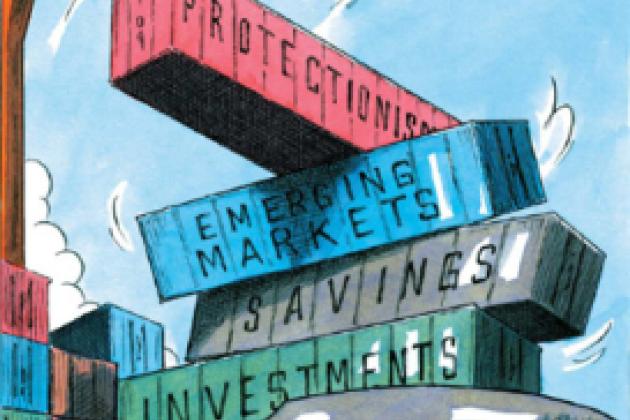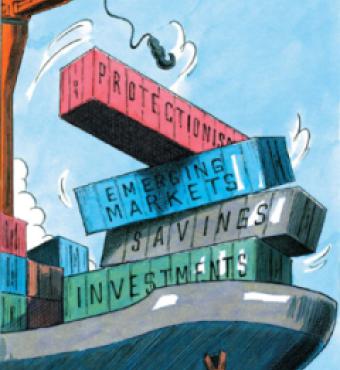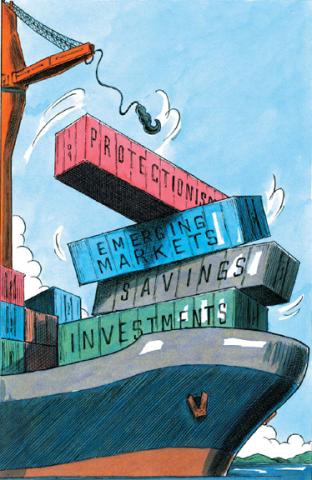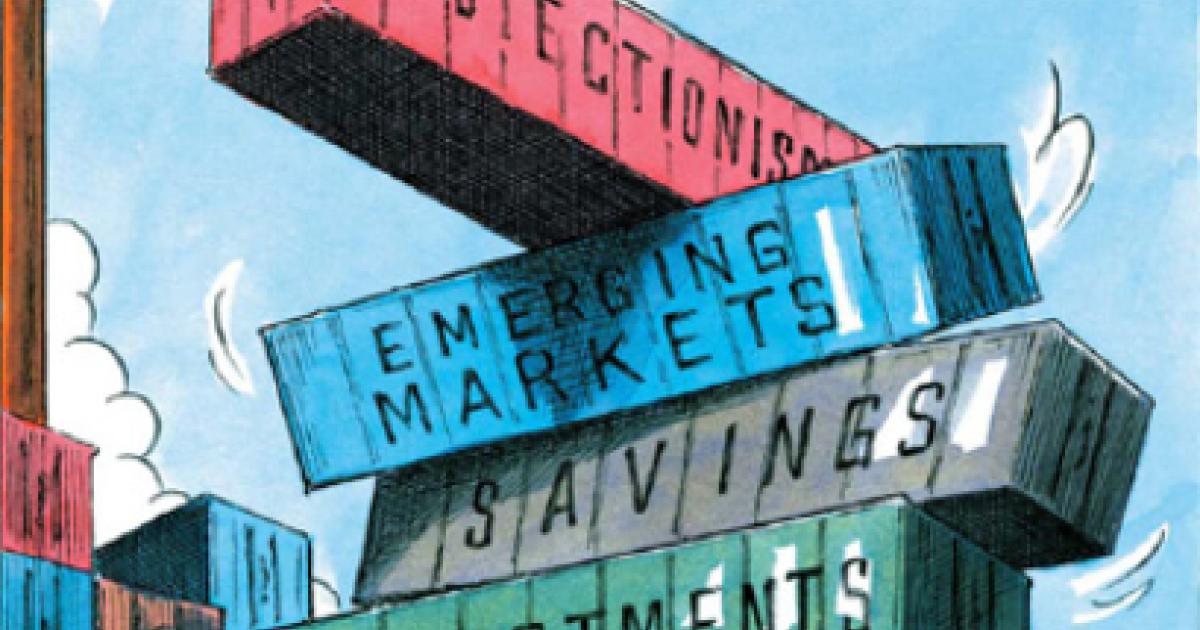- Budget & Spending
- Economics
- US Labor Market
- International Affairs
- US Foreign Policy
For the past few years, the United States has generated insufficient domestic savings to cover its investment needs. The difference has been covered by large capital inflows from abroad, the counterpart of which is the much discussed current account deficit, which has been running at unprecedented rates of 6–7 percent of GDP.
The U.S. need for inflows from abroad to cover the saving deficit has coincided with a desire on the part of other countries to invest more in the United States. Driven by large trade surpluses (and sometimes surpluses on the private capital account), countries such as China have accumulated substantial reserves in their central banks, the bulk of which have been invested back into the United States.
The size, and the trend over time, of this capital flow has become more pronounced in recent years. This has raised concerns about its sustainability, including whether it will end in a sudden and disorganized manner that sharply reduces growth in the global economy and causes problems in global capital markets. Underlying the concern is a kind of puzzlement about the configuration of global savings—one that runs counter to virtually every textbook description: the world’s richest country appears to be saving at a low rate and having to borrow from poorer, developing countries to maintain its consumption and investment.
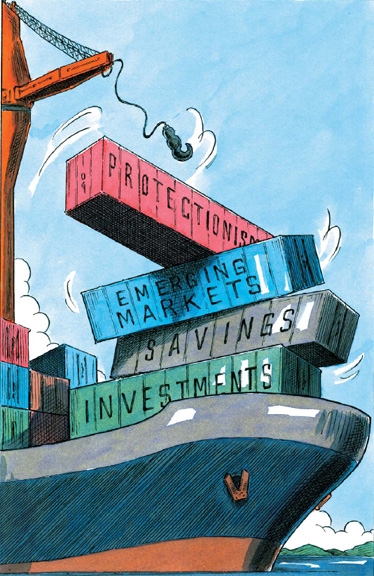
Let’s analyze this puzzle, beginning with the United States.
The financial assets of U.S. households have risen rapidly in the past 10 years, at rates well above inflation. The most dramatic increase occurred in household real estate, principally housing.
At least some of these increases in asset values were not anticipated, relative to the long-term savings and consumption plans that households normally follow. The increases thus represented a large, unanticipated windfall. Notwithstanding examples of irresponsible borrowing and lending behavior— which is being vividly illustrated by the subprime-mortgage debacle— it nevertheless seems reasonable that U.S. households would consume a portion of their windfall capital gains or increased real estate equity over time.
The recent shakiness in the subprime-mortgage market has created uncertainty about whether this pattern will be sustained. Certain creditors have fallen out of the market and the rate of mortgage default is rising, increasing the risk of additional housing inventory coming onto the market. More generally, the potential pressure on house prices could also reduce households’ propensity to consume out of their accumulated equity windfall. In addition, there is concern in the capital markets that global growth could be hindered.
These concerns are worth monitoring carefully—and they highlight a more general issue that has deep roots: while individual consumption and savings decisions may have been largely rational, the decisions of individual households may not “add up” properly in the aggregate sense. In fact, they easily may not.
Suppose, counter to fact for the moment, that the U.S. economy were closed, meaning not connected to the global economy. And suppose further— not counter to fact—that the economy were running at close to potential output, given the technological base, so that there wasn’t much “spare” capacity.
In those circumstances, the attempt to increase consumption in response to asset-price increases would lead initially to excess demand and inflationary pressure. The Federal Reserve would respond by raising interest rates or reserve ratios to limit borrowing, in effect cutting off the aggregate demand increase. Economic variables would adjust. Borrowing and consumption would go down, investment would probably fall, and asset prices including housing would stabilize or fall—for, in a closed economy, consumption (including government expenditure) and investment cannot exceed output. Either inflation or central banks will react; either way, in real terms the balance is maintained.
In an open economy like ours, however, we can consume and invest more than our output by importing more than we export—and we do. Hence the trade deficit. However, this ability is dependent on the ability and willingness of the rest of the global economy to accommodate the U.S. desire for higher consumption by investing in the United States. That accommodation has been forthcoming from emerging economies generally, including the Organization of Petroleum Exporting Countries (OPEC) and China, as well as Japan.
The emerging economies’ initial reaction to their improved external trade balances has been primarily to recycle the funds to the “risk-free assets,” U.S. Treasury and agency bonds. By financing U.S. consumption, many countries are also meeting domestic objectives of promoting exports, increasing employment, and building up significant reserve cushions to deal with the possibility of sudden disruptions in global capital markets.
This constellation of conditions was largely unanticipated by both markets and policy makers; as a result it has been reflected in a host of unusual economic and market outcomes—many referred to as conundrums, aberrations, puzzles, and the like. The most visible is the configuration of the global imbalances; also of note is the excessive compression in risk spreads, the unusual collapse in market volatility, the inverted shape of the U.S. yield curve, and the unusual disagreement among Fed watchers about the size and direction of likely interest-rate moves in the remainder of this year.
Now to the future. Over time, emerging markets will inevitably divert more of their assets to more-sophisticated investments abroad. That shift will have many effects, some of which depend on the decisions taken by emerging economies and others on the evolution of the global context. One effect will surely be to put upward pressure at some point on the cost of capital in the United States, as the incremental demand for Treasury bonds declines.
Although the shift is inevitable, it is unlikely that the emerging economies as a group would deliberately take actions that directly undermine global economic markets. Policy makers in emerging countries will also be under domestic pressure to gradually shift their emphasis away from the producer and toward the consumer. That will mean lowering the savings rate relative to investment, increasing consumption, and letting consumption assume a more important role (relative to exports and global demand) in driving growth.
In this state of the world, domestic consumption in the rest of the world picks up over time, facilitating the needed adjustment in the United States. The result is a gradual journey to a more normal relationship between assets and income returns, with savings moving to a more normal long-run pattern.
But this process is not automatic and faces significant disruption risks. It is particularly sensitive to “policy mistakes.”
Among such policy mistakes would be protectionism measures in the United States, which would derail the global adjustment. So, too, would the inability of emerging economies to navigate their complex policy challenges.
Geopolitical shocks would also be a problem, as they could undermine the free flow of goods and services. Finally, significant “market accidents,” which in the past have been associated with excessive leverage and have triggered sudden and large portfolio changes and credit rationing, would add to the policy complexity.
So where does this leave us? The current configuration of global imbalances, while highly unusual, is not a real puzzle. It is the result of a series of individual decisions in both advanced and emerging economies that were largely rational when considered at the micro level.
Those decisions reflected individual self-interest, and happened to coincide. The aggregation of those decisions at the national and international levels presents a considerable challenge, as does the ability to maintain an orderly global reconciliation process over time. The fundamental question, therefore, is whether those global considerations will be sufficient to minimize the risk of policy mistakes in a world subject to geopolitical risk and bouts of excessive leverage.








